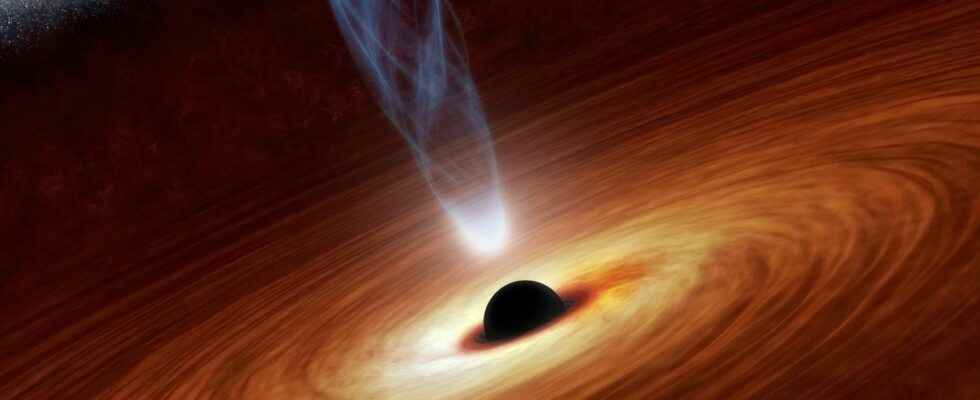Stephan’s Quintet, a visual grouping of five galaxies located in the constellation Pegasus, was among the first images chosen to illustrate the power of the James-Webb Space Telescope in comparison with that of its predecessor, Hubble. But the JWST not only makes it possible to take sumptuous images, it also performs spectroscopic analyzes revealing the chemical composition of stars and astrophysical environments. We see an example with one of the supermassive black holes associated with the galaxies of the Stephan Quintet.
The James-Webb is still only at the very beginning of its observations and it is already giving spectacular results. We even wonder if he is not providing us with elements to decide the dark matter theory of the Mond theory in cosmology.
While waiting to find out, let’s be patient while taking note of certain results already obtained, such as those concerning the famous Stephan Quinteta visual grouping of five galaxies located in the pegasus constellation but of which only four are truly gravitationally associated, the fifth galaxy being simply in the foreground of the other four. This last gate the number NGC 7320 among the New General Catalog of Nebulae and Clusters of Stars or NGC — in French “New general catalog of nebulae and piles ofstars », which we owe initially to John Louis Emil Dreyer (1852 – 1926), a astronomer Irish-Danish.
Specters talk about the environment of the black hole of NGC 7319
With the JWST, the astrophysicists focused on the case of NGC 7319 which houses an active galactic nucleus whoseenergy light equivalent to 40 billion suns comes from a supermassive black hole of 24 million masses sunglasses — our Milky Way contains one, Srg A*a little over 4 million solar masses.
For their curriculum, they relied on the spectrometer to medium resolution (MRS) which is part of the mid-infrared instrument (Miri) of the James-Webb. MRS contains an imager and a spectrographwhich made it possible to observe and make measurements concerning the gas closer to the central black hole of NGC 7319 than ever before. The instrument revealed that the black hole was shrouded in silicate dust whose composition is similar to the sand of beach but much smaller in size than grains of sand.
Of them spectra were shown in the image above.
The spectrum in the upper part shows a region filled with hot and ionized gases, notably containing ironof the’argonfrom neonfrom sulfur and of theoxygenas indicated by the peaks at wavelengths data. The presence of several lines ofemission of the same element, with different degrees ofionizationis valuable for understanding the properties and origins of plasma flows around the black hole.
The spectrum of the lower part reveals, meanwhile, that the supermassive black hole is associated with a cooler and denser reservoir of gas with large amounts ofhydrogen molecular and silicate dust which absorbs the light central regions of the galaxy.
A desire to escape for the summer?
To celebrate the holidays as it should be, discover the Mag Futura at the preferential price of €15 instead of €19, i.e. a reduction of 20% !
On the program of this issue: a dive into the heart of 4 scientific themes that will mark 2022, from the Earth to the Moon:
- What mysteries does the Moon still hide from us?
- Will we soon be able to cure everything thanks to genes?
- How to feed the world without destroying it?
- Can artificial intelligence become truly intelligent?
What is Mag Futura?
- Our first paper journal of more than 200 pages to make science accessible to as many people as possible
- 4 major scientific questions for 2022, from the Earth to the Moon
- Home delivery*
*Delivery is made in France (excluding metropolitan France), Switzerland, Belgium.
Interested in what you just read?
